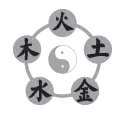Japanese Acupuncture
 Toyohari is a form of ‘Keiraku Chiryo’ -Japanese Meridian Therapy.
Toyohari is a form of ‘Keiraku Chiryo’ -Japanese Meridian Therapy.
In 1959 Kodo Fukushima, a blind Japanese acupuncturist founded the Toyohari Medical Association, which trained blind acupuncturists in Japan.
Japanese acupuncturists consider that the underlying principle of treatment is to regulate the flow of qi in the meridians. Symptoms, disease and pain occur when the body’s qi, or vital energy, is not regulated. Regulating the 12 primary meridians in quantity & quality is described as the ‘root’treatment and takes priority to just treating the symptom (‘branch’ treatment).

Diagnosing the quantity & qualitiy of qi circulating in the 12 meridians by touch is done through developing highly sensitive pulse-taking skills. The patient’s presentation of ‘colour, sound, odour, emotion’ help diagnose the root-cause of any symptoms. All symptoms are seen in relation to the 12 meridians & 5 elements. Diagnosing and regulating the merians is seen as the ‘root’ treatment. A root treatment is always done before targeting symptoms (‘branch treatment’).
Traditional Japanese Acupuncturists are trained to use subtle diagnostic techniques that have been developed and refined for centuries. The focus is on the individual, not the symptom. Each patient is unique; two people with the same western diagnosis may well receive different acupuncture treatments.

